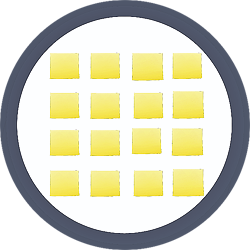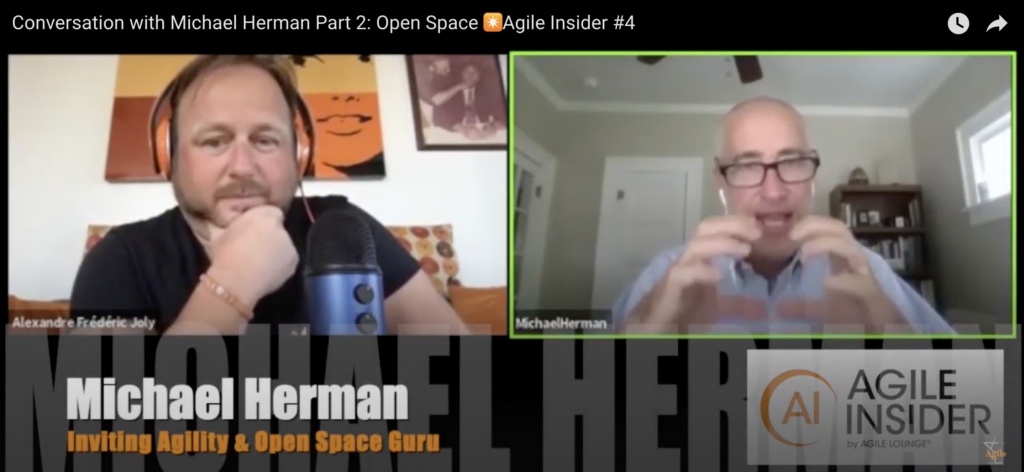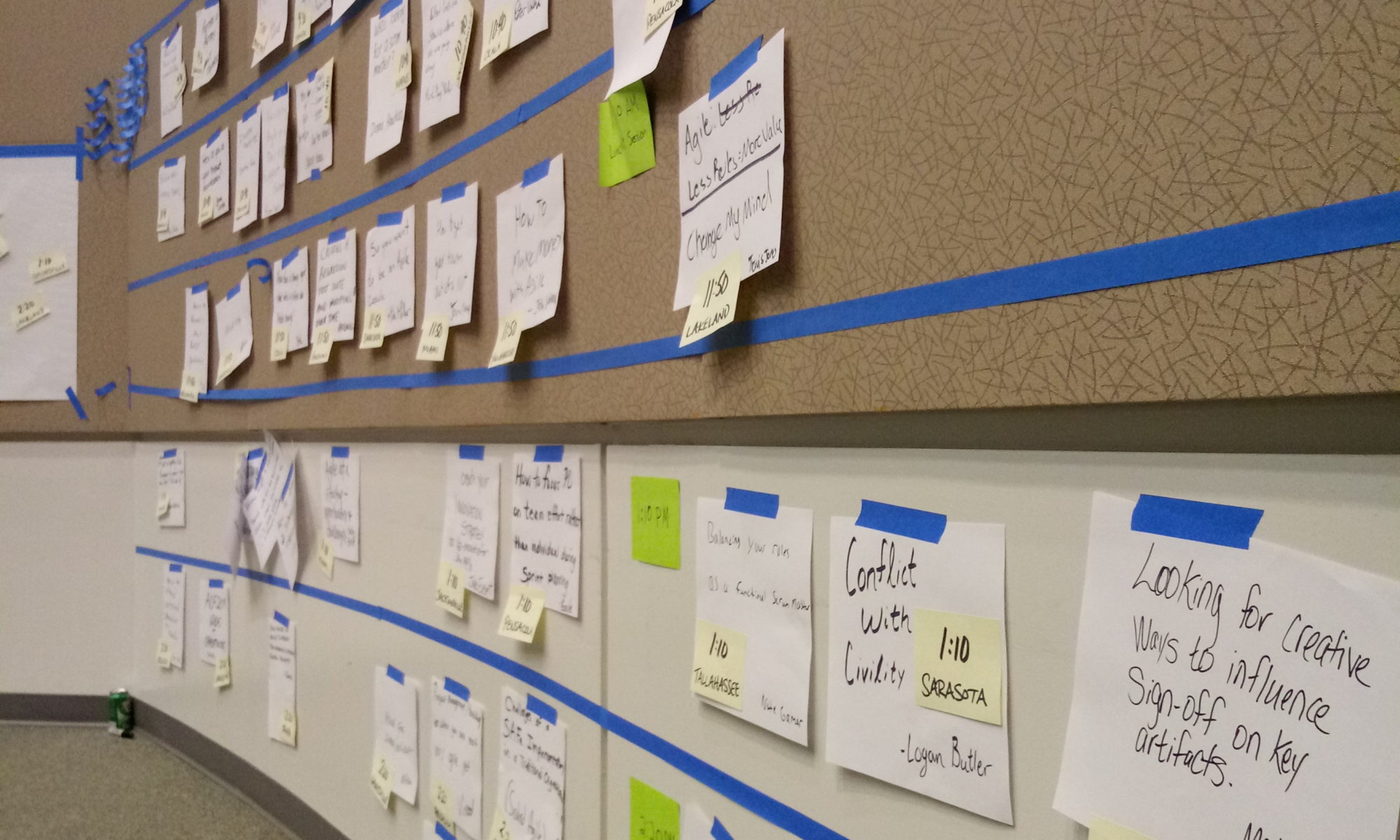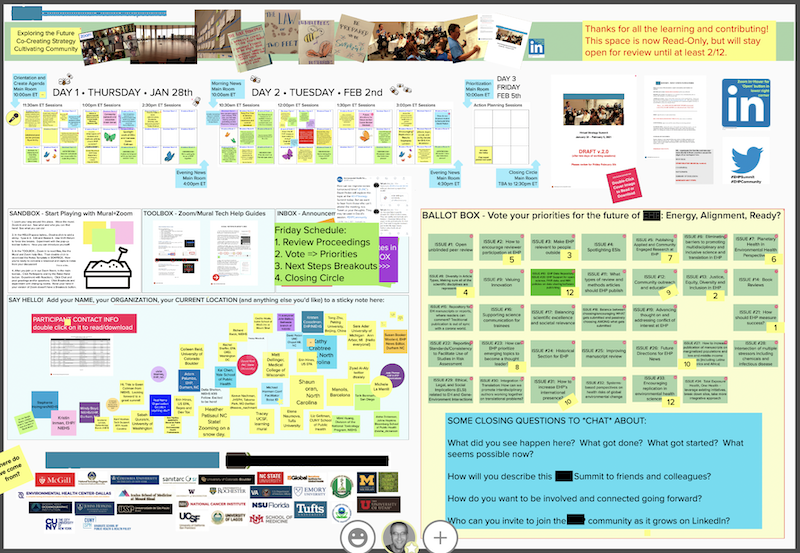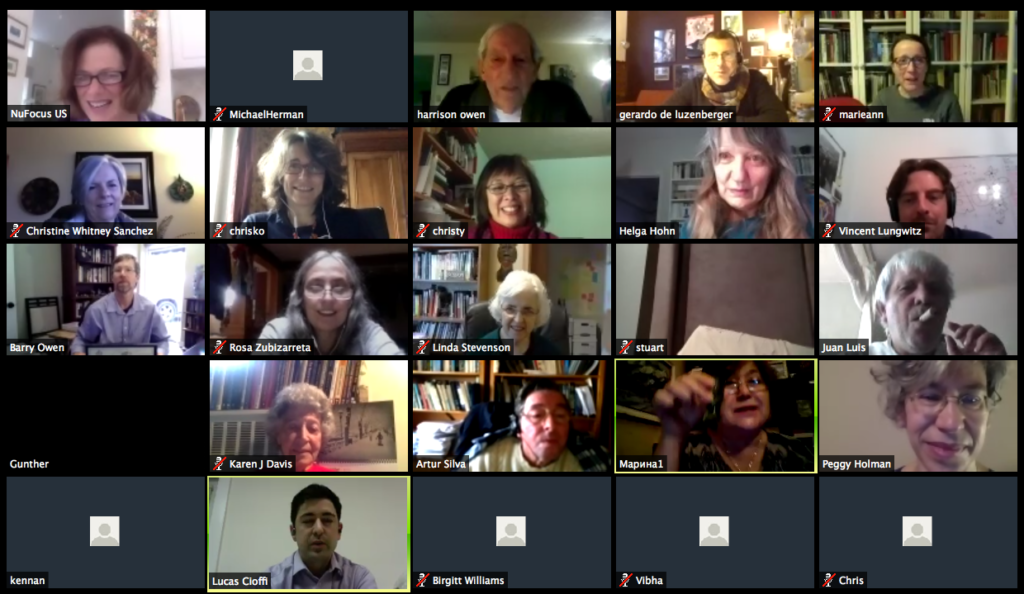Here are some favorite stories/examples of what we’ve done, over the years, in Open Space (overview, learnings) meetings and summit events:
Senior Executive Summit meeting in South Africa – A global leader in their industry convened a for 120 leaders, to coincide with the announcement of an important legal ruling. At stake was fully 10% of revenues going forward, an even higher share of annual profits, and perhaps the beginning of the end of seemingly unshakable market dominance. No matter the legal outcome, their future would now require a tremendous change in mindset. During our meeting, the decision came down, and went against them. Pre-set market-facing plans were set in motion. The extended leadership group was already fully mobilized for making the shift from “big” to “smart.” They identified 14 strategic imperatives, examined them fully in our first day of working sessions, used computer voting software to prioritize these issues for two rounds of action planning on the morning of day two, and ultimately fed all of that into functional team meetings on the second afternoon. Over the next year, they used open space successfully several more times and adopted “setting the PowerPoints aside” as a standard part of their executive forum events.
The Chicago Community Trust and a number of co-sponsoring activist organizations used OpenSpace for the first Illinois Food Security Summit, a 200-person, 3-day conference that brought the full range of Illinois food security players into one room for the first time. The group included vegans and beef producers, organic farmers and chefs, food pantry volunteers and government agencies. They raised and addressed 70 different issues, identified a number of immediate next steps, and established the Chicago-Area Food Policy Council to shepherd future activities. The story that still comes up over and over again from participants is that they continue to be amazed that so many different kinds people, who met there for the first time, are still talking — and are now working on dozens of large and small, old and new projects together, including several more statewide summits. See also Proceedings and FoodSummitStory. UPDATE 2006: …asked to facilitate a follow-on, regional food summit held in Rockford/FourRivers area. UPDATE 2017: Routes to Farm Summit for direct-to-market farmers and local food movement partners.
The Agile Software Alliance and Extreme Programming Universe ran one third of their annual, 300-person, international conference in Open Space and documented the proceedings in a revolutionary new web format called a WikiWeb. The Agile/Extreme movement is encouraging a whole new way of software development that looks very much like OST. A number of people attending this conference learned enough from watching the process to go out and facilitate their own meetings in Open Space. AgileXpUniverseFacilitatorNotes and AgileXpParticipantComments UPDATE: In 2011, the Agile Alliance Board now does much of their face-to-face (board retreats) work in Open Space ways and that initial conference experiment has bloomed into many regional groups and regular conferences, called Agile Open(s), running entirely on their own, in Open Space.
Peoria School District 150 held a 3-evening, 200-person summit meeting, in the midst of post-911 budget cuts and other major change issues, to create a community-wide vision and set new priorities for revitalizing their school system. The meeting was well-covered by local broadcast and print media, the 100-page proceedings was publicly available via the District’s website, and the top priorities identified on the third evening became the working agenda for their new superintendent and school board. Proceedings
InterChange: Schlumberger internal global leaders conference. Within that traditional conference featuring presentations by 40 of their most senior executives, they used OpenSpace for a 6-hour strategy forum for 120 senior managers, published 50-page proceedings online internally, and delivered a printed report for all participants to discuss directly with their Chairman and CEO.
In Racine, Wisconsin, 35 young people (ages 12-20) gathered for one 4-hour, afterschool conference in Open Space. As a result of that meeting they initiated a youth art newsletter, a downtown, lakefront skateboarding park, and the largest YMCA Earth Service Corps chapter in the country. They called themselves ‘Youth Action,’ used OST at all their meetings, and eventually ended up introducing OST to young leaders from all over the USA. YouthActionRacineInvite | YouthActionRacineStory UPDATE 2011: Recently one of the three young women (17 year olds) who picked up the leadership of this group so easily back then, reported that she was in the middle of Opening Space for a conference of people working to end the death penalty. What she learned one afternoon in high school, ten years ago, now informs her life’s work.
Jewish in America: The Conversation, a new, national conversation initiated by The Jewish Week, the largest American Jewish newspaper. The two-day summit retreat, held at the Aspen Meadows Institute, offered a safe and creative environment for 75 American Jews who are leaders or potential leaders in their respective fields to talk about the future of Jewish life in this country and what it means to be Jewish in the 21st century. Participants came from a wide span of religious, political and generational perspectives, but shared a common love for the Jewish people, its history, survival and advancement. They met, talked, prayed, imagined and planned together. More at… TheConversationNews (news reports). Using what they learned in that first event, organizers have continued ”The Conversation” as an annual Open Space conference they run without any need for my ongoing support.
Transforming Philanthropy is an initiative that began with the GivingConference, hosted with Phil Cubeta at GiftHub, which brought together philanthropists, weblog publishers, financial advisors, and community organizers. A core group then moved to Omidyar Network and convened a number of O.net members summits. Some of the people at the first of those summits went on to organize RecentChangesCamp, which connected software technologists and community leaders and activists (see OregonianNewspaper). All of these summits have been 3-day meetings, attended by 40-120 people, and run completely in Open Space. At least three new conferences are now being planned for 2006. Phil posted this Update May 2006. Ted Ernst facilitated another in this lineage, O.net Uganda 2007, and later introduced WikiSym to meeting in Open Space in San Diego and Denmark. Theresa Williamson took OpenSpace back to her work running CatalyticCommunities in Rio de Janeiro. UPDATE 2011: See RecentChangesCamp which has been a great success story, in its own right, now having been repeated on three continents since 2005. Beyond this, results flowing from RecentChangesCamp, WikiSym’s shift to Open Space, and other Giving Conference beginnings get harder and harder to track and record — which is just great.
Peaceful Development Organizers in Kathmandu, Nepal, held a one-day introduction to OpenSpace for about 20 students and staff at a local college. Based on the success of that day, they held a second day for more than 40 community organizers and facililtators, which set the stage for a first annual 4-day, national conference and leadership training program on peaceful development and the future of Nepal. Funded by the Open Space Institute USA, it enabled seventy-five community leaders from every part of Nepal used and learned AppreciativeInquiry and OpenSpace. NepalConferenceSummary | NepalTrainingSummary UPDATES: When a thousand year old sacred “gate” was destroyed later, in the course of civil unrest and rebellion, in the village of one of my colleagues there, he wrote to say that he was organizing an Open Space on rebuiding the gate. Later still, when the Maoists rejoined the government and the new government was formed, my colleagues wrote again, to say that they were working toward an Appreciative Inquiry + Open Space meeting for the newly formed 600-member Constituent Assembly (national legislature).
The school district in Fairbanks, Alaska (covering an area the size of the entire state of Connecticut) held a 2-day, 250-person conference on Becoming a Peacemaker. Half the participants were students in the middle and high schools (ages 13-18) and all participants had some experience with mediation and conflict resolution. The kids did exceptionally well in Open Space and one high school student led a series of four breakout sessions to create an entire suicide prevention program that for the middle school students. The statewide suicide prevention hotline was up and running within weeks of the conference. The conference in Fairbanks was followed by a 2-day OST training and practice workshop, attended by about 60 youth and adults. Six months later, they reported that they were holding 1-3 OST meetings per week, in and around Fairbanks.
Deep Earth Academy, with National Science Foundation support, rewrote the book on informal ship-to-shore science education. The JOIDES-Resolution (JR) is an international research drilling ship, managed like other joint science stations in space or antarctica, and the source of perhaps 60% of everything we know about climate change. The Deep Earth Academy works to translate the science done aboard the JR into classrooms, museums, and other learning places. With planning grant funding from the NSF, DEA gathered 55 scientists, educators, media experts, and other specialists for 2.5 days in open space — to rewrite the book on informal ship2shore science education and draft a set of collaborative, synergistic pilot project proposals. Participants raised 35 issues, explored them in depth, prioritized all of it, and then began drafting specific project proposals. We posted all of their notes in a new project website which will be used for the next two years as the proposals are funded, the pilot projects are implemented, the outcomes evaluated and a much larger implementation grant. UPDATE Fall, 2013: The organization chose to fund four of eleven proposed pilots, all of which have been developed successfully. Next up, implementation grant submission early 2014.
